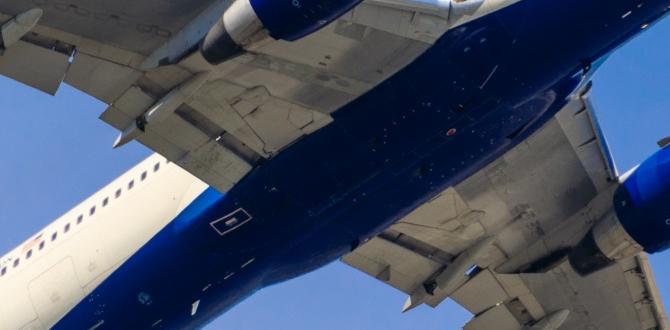Have you ever felt dizzy or nauseous while traveling? You are not alone! Many people suffer from motion sickness during car rides, boat trips, or even airplane flights. It’s a common problem, but did you know there are simple motion sickness remedies that can help?
Imagine this: You are enjoying a fun family road trip, but suddenly, your stomach starts to flip. You wish you could enjoy the ride without feeling sick. The good news is that there are effective solutions to ease your discomfort.
From natural remedies to over-the-counter options, finding relief can be easier than you think. Think about ginger tea or special wristbands designed to help. They can work wonders! Curiously, some people find simple breathing techniques helpful too. Wouldn’t it be great to know how to keep the nausea at bay?
This article explores a variety of motion sickness remedies. With the right tips, you can enjoy your travels without fear of feeling unwell. Let’s dive in and discover how you can keep the fun rolling on your next adventure!
Effective Motion Sickness Remedies For Quick Relief
Do you feel queasy when traveling? Motion sickness can ruin any trip. Luckily, there are easy remedies to help. Ginger is a popular choice; it can soothe your stomach. Some people use acupressure bands to reduce symptoms. Staying hydrated and choosing a window seat may also help. Did you know that looking at the horizon can ease the feeling? These simple tips can make your journeys much more enjoyable. Why let motion sickness hold you back?
Understanding Motion Sickness
Definition and types of motion sickness. Symptoms and triggers.
Imagine your stomach doing the cha-cha while you’re sitting still! Motion sickness happens when your brain gets confused by mixed signals from your eyes and inner ears. There are different types, like car sickness, sea sickness, and even air sickness. Common symptoms include dizziness, nausea, and sweating. Fun fact: it affects up to 30% of people when traveling! Major triggers are reading while moving and twisting turns. Be careful on those curvy roads!
| Type of Motion Sickness | Symptoms | Common Triggers |
|---|---|---|
| Car Sickness | Dizziness, Nausea | Reading, Fast Driving |
| Sea Sickness | Vomiting, Sweating | Waves, Boat Movement |
| Air Sickness | Headaches, Fatigue | Aircraft Turbulence |
Natural Remedies for Motion Sickness
Ginger: Benefits and how to use. Peppermint: Ways to incorporate into your routine.
Ginger can be a great help for motion sickness. It has natural compounds that soothe the stomach. You can use ginger in different ways:
- Drink ginger tea before traveling.
- Eat ginger candies or gummies.
- Add fresh ginger to your meals.
Peppermint is another effective remedy. Its fresh scent can ease nausea. Here are simple ways to use peppermint:
- Inhale peppermint oil or use a diffuser.
- Sip peppermint tea on the go.
- Keep peppermint candies handy for travel.
Over-the-Counter Medications
Common OTC medications for motion sickness. How they work and potential side effects.
Some medications can help with motion sickness. Over-the-counter (OTC) options are popular and easy to find. Common medications include:
- Dramamine: Reduces dizziness and nausea.
- Bonine: Works well with less drowsiness.
- Antihistamines: Helpful for mild cases.
These drugs work by blocking signals to the brain that cause sickness. Some side effects can occur, such as tiredness or dry mouth. If you feel tired, it’s best to avoid driving.
What are common OTC medications for motion sickness?
Common OTC medications include Dramamine, Bonine, and antihistamines. They help by stopping your brain from getting messages that cause sickness.
Behavioral Techniques to Alleviate Symptoms
Visualization and deep breathing exercises. Importance of posture and positioning.
Feeling queasy when you move? Try some simple tricks! Visualization can help. Picture a fun place, like the beach, while you travel. Deep breathing also works wonders. It calms your mind and body. Sit up straight and avoid slouching. Good posture makes a big difference! Remember, being comfy is key! If you’re in a car, look at the horizon. It helps your brain get the right messages. Who knew riding in a car could be like riding a rollercoaster? Keep smiling!
| Technique | Description |
|---|---|
| Visualization | Imagine a peaceful scene to distract your mind. |
| Deep Breathing | Inhale slowly to calm your nerves. |
| Good Posture | Sit straight for better comfort and balance. |
Dietary Considerations for Prevention
Foods to consume and avoid before traveling. Hydration tips for reducing symptoms.
Choosing the right foods can help you steer clear of yucky feelings while traveling. It’s best to nibble on light snacks, like crackers or bananas, before a trip. Steer clear of heavy meals and greasy snacks that may come back to haunt you! Don’t forget to hydrate; sipping water can ease symptoms. Remember, a well-hydrated traveler is a happy traveler! Here’s a quick table to guide your snack choices:
| Foods to Eat | Foods to Avoid |
|---|---|
| Crackers | Greasy fries |
| Bananas | Heavy meat dishes |
| Ginger candies | Spicy foods |
| Rice | Rich desserts |
Eating right and staying hydrated can make your journey smooth and fun, so pack those ginger candies and water bottles! Happy travels!
Alternative Therapies and Approaches
Acupressure and acupressure bands. Chiropractic care and its effectiveness.
Feeling queasy on a boat or in a car? You might try some fun alternatives! Acupressure works by pressing specific points on your body. These points can help reduce nausea. Acupressure bands are wristbands that apply pressure to those magic spots. They fit snugly, like a friendly hug for your wrist!
Chiropractic care is another option. It focuses on the spine and nervous system. Many people find relief after a visit. It’s like getting your body’s gears oiled! A study showed over 60% of patients reported improved symptoms after chiropractic treatments.
| Method | How It Works | Effectiveness |
|---|---|---|
| Acupressure | Pressing points to ease nausea | Many find it helpful! |
| Chiropractic Care | Adjusting the spine | Over 60% see improvements! |
When to Seek Medical Help
Signs that indicate a need for professional evaluation. Possible underlying conditions related to motion sickness.
Sometimes, motion sickness can be more than just feeling queasy. If you notice these signs, it might be time to see a doctor:
- If symptoms last longer than a few hours.
- If you experience severe headaches or vision changes.
- If you feel dizzy often, even without movement.
- If you faint or have trouble walking.
These signs could point to other health issues. Conditions like inner ear problems or migraines can cause similar symptoms. Always listen to your body, and don’t hesitate to seek help.
What are some symptoms that require medical attention?
Signs include prolonged dizziness, severe headaches, and fainting.
Innovative Technologies for Managing Motion Sickness
Wearable devices and apps designed for relief. Research on new treatments and developments.
New gadgets and apps are making life easier for those with motion sickness! Wearable devices are like stylish superheroes that help fight nausea. They can send gentle vibrations to calm your stomach. How cool is that? Researchers are busy exploring fresh treatments, including special glasses that might help your eyes stay focused. So, whether you’re in a car, on a boat, or soaring high on a plane, technology can lend a hand—or a wearable wrist. Check out the table below for some interesting options!
| Device/App | Function |
|---|---|
| Motion Sickness Bands | Use pressure points to reduce nausea |
| Sea-Band | Wearable acupressure band for relief |
| Calm App | Meditation and breathing techniques |
| Wearable Anti-Nausea Devices | Vibrations help soothe symptoms |
Personal Stories and Experiences
Testimonials from individuals who have successfully managed motion sickness. Lessons learned and tips shared by sufferers.
Many people share their stories about dealing with motion sickness. For some, using ginger helped calm their stomachs during car rides. Others found success with over-the-counter medicines. Here are some lessons learned from their experiences:
- Stay focused on the road ahead.
- Take deep breaths if you feel sick.
- Rest your eyes or take breaks on long trips.
These tips can make travel easier. A happy traveler shared, “Ginger candies saved my trips!” Learning what works for you can help turn motion sickness into a bearable issue.
How can I prevent motion sickness while traveling?
To prevent motion sickness, sit in the front, look outside, and avoid reading or screens. Also, stay hydrated and eat light snacks.
Conclusion
In conclusion, motion sickness remedies can really help you feel better. Simple tricks like looking at the horizon or taking deep breaths work well. Over-the-counter medications can also provide relief. If motion sickness affects you often, consider talking to a doctor. Explore more tips online so you can enjoy your travels without feeling sick!
FAQs
What Are Some Effective Natural Remedies For Motion Sickness?
You can try ginger to help with motion sickness. Ginger candies or ginger tea work well. Another option is peppermint. You can chew on peppermint gum or drink peppermint tea. Also, sitting in the front of a car or looking at the horizon can help.
How Do Over-The-Counter Medications For Motion Sickness Work, And What Are The Common Options Available?
Over-the-counter medications for motion sickness help by blocking signals in your brain that cause nausea. They stop your body from feeling dizzy and sick when you travel. Common options include dimenhydrinate (Dramamine) and meclizine (Bonine). You can take these medicines before your trip to feel better. Always remember to follow the instructions on the package.
Are There Specific Strategies To Prevent Motion Sickness During Travel, Especially For Children?
Yes, there are ways to help prevent motion sickness. First, sit where you can see the road, like in the front seat. You can also keep your head still and rest it on something soft. Drinking water and eating light snacks can help too. Finally, taking breaks to get fresh air can make you feel better.
What Role Does Hydration Play In Managing Symptoms Of Motion Sickness?
Hydration helps you feel better when you have motion sickness. When you’re thirsty, your body can feel weak or dizzy. Drinking water keeps you refreshed and helps your stomach work better. If you’re well-hydrated, it’s easier to keep nausea away. So, remember to drink water before and during a trip!
How Can Specific Acupressure Techniques Help Alleviate Motion Sickness Symptoms?
Acupressure uses gentle pressure on certain points of your body to help you feel better. For motion sickness, you can press on a point called P6, which is located on your wrist. This pressure can calm your stomach and help stop the feeling of nausea. We can try this technique next time we go on a car ride or a boat trip!







